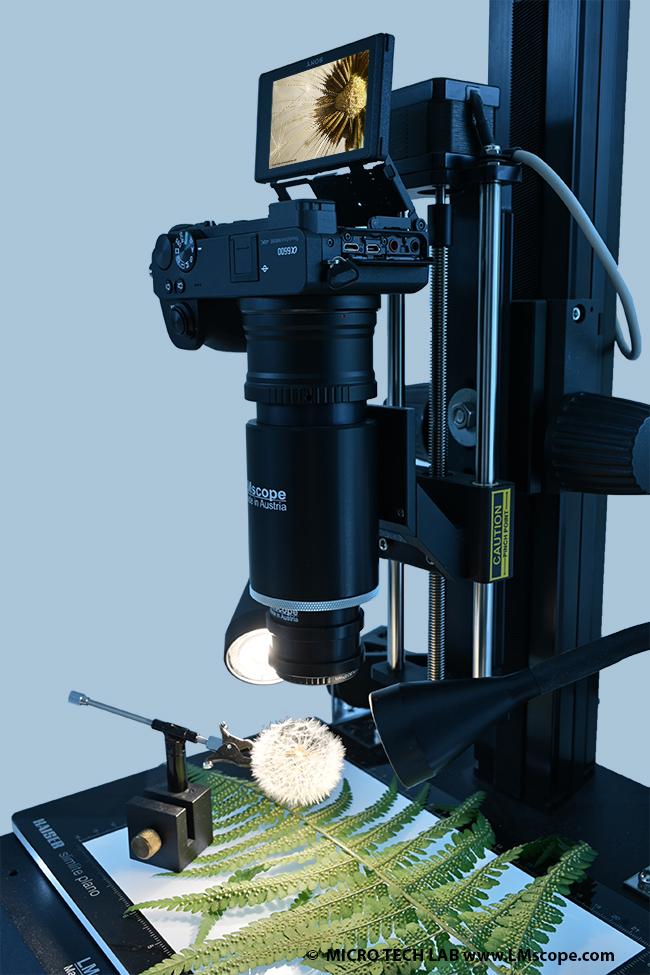

Lighting technique example application: the LM photo microscope used with a Kaiser LED light box to provide transmitted light illumination
Optimal lighting for perfect extreme macro and microscope images
Proper lighting is essential for any type of photography, but it’s especially important in microscope photography. To capture a high-quality image, above all you need to get the lighting right, because only this enables you to get the smallest details of your subject on camera. With the new LM microscope and macro lenses, even large specimens can be captured in high resolution. Due to their size, these specimens are often a challenge for the transmitted light units of microscopes, because they are either simply too small or unable to provide a homogenous distribution of light over the entire surface. In the worst case, you’ll get darkening at the edges and the image is only usable to a limited extent. For this reason, we searched for an alternative and found the Kaiser LED light box: an inexpensive (about € 70 as of June 2022) and yet powerful solution.

In our example application, we used the “Slimlite Plano”, the smallest version of the Kaiser LED light box, because this format is a perfect fit for the base plate of our microscope stand. The illuminated area is spacious enough to accommodate even large specimens.
The illuminated area measures 22 x 16 cm, which is a comfortable size. The light box is equipped with a rechargeable battery and can be powered either wirelessly by the battery or with a USB power supply unit. The unit features an ultra-slim design (only 8 mm thickness) and homogeneous lighting from corner to corner. It weighs about 570 grams.

The light box can be used for large macro specimens and for microscope slides. It provides uniform, homogeneous illumination and has a dimming function to adjust the light intensity. The colour temperature is 5000 Kelvin. The lighting is provided by 23 LEDs, the power consumption is 3.6 watts. Compared to the transmitted light unit of a conventional microscope, the luminous intensity per unit area is significantly lower. However, the illuminated area is large and the light distribution is even and uniform, which is a distinct advantage. As modern digital SLR cameras, mirrorless system cameras or C-mount cameras are usually very light sensitive, the lack in luminous intensity can be compensated with a slightly longer exposure time. The ideal range of use is up to a microscope magnification of about 100x.

Shown in the image above: modern focus stacking technique with incident and transmitted light, LM photo microscope, Sony A6600, Helicon Focus software and StackShot focusing rail

In our example application, we used the light box as a transmitted light unit to create the background. For this, we placed flower petals or green leaves on the light box. As our main source of illumination, we used two gooseneck LED spotlights which we pointed at the subject.


This blend of incident and transmitted light provides a beautiful background and illuminates the specimen uniformly and at an optimal angle, because the flexible LED spotlights can be adjusted to optimise the intensity and angle of light needed. Taking your time to get the angle just right pays off: your image will have great contrast without any reflections or glare.

